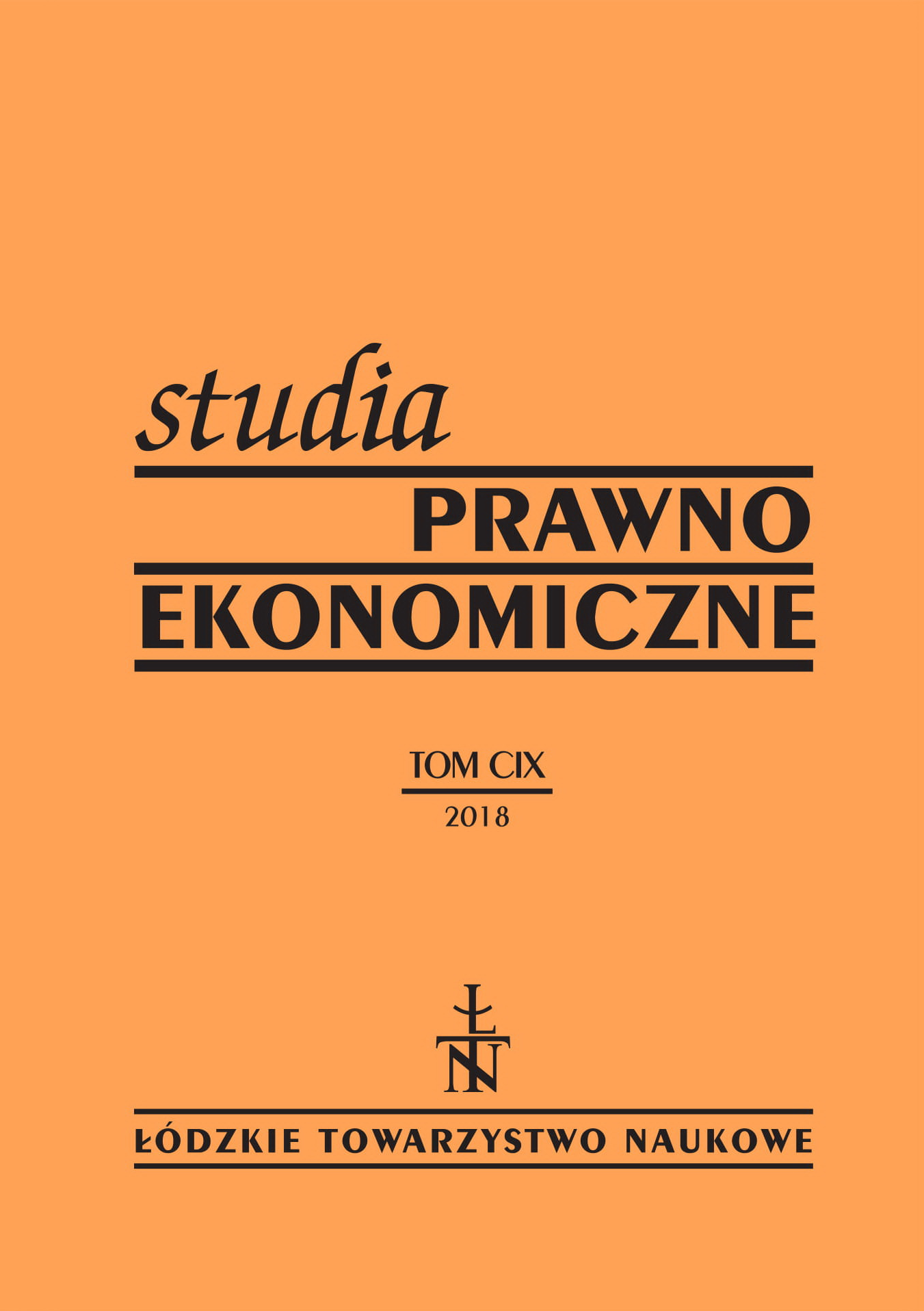The strategies of net working capital management and their impact on the profitability of Polish it and electromechanical stock companies
DOI:
https://doi.org/10.26485/10.26485/SPE/2018/109/15Keywords:
net working capital; strategies of net working capital management; financial liquidity; profitabilityAbstract
The aim of this study is to explore the character and strength of the correlation between the established strategy of net working capital management and the profitability of particular stock companies belonging to different sectors. The theoretical-empirical study in the paper tests the general research hypothesis, which stipulates that sectoral differences can be observed in the impact of the strategy of net working capital management on the profitability of enterprises. It may be assumed that the growth in profitability of electromechanical stock companies, as opposed to IT stock companies, is most often connected with retaining the proper financial liquidity. The study comprises selected companies from the IT and electromechanical sectors which were listed on the Warsaw Stock Exchange (qualified as of 01.10.2017). The diagnosis is based on annual financial reports dated 2007–2016. The research shows only positive and, more importantly, statistically significant relationships between values of the net working capital and liquidity ratios, and returns on sales, total assets, and equity. Moreover, in the analyzed electromechanical companies there existed stronger positive correlations between the examined variables.
Downloads
References
Appuhami Ranjith, The Impact of Firms’ Capital Expenditure on Working Capital Management:
An Empirical Study Across Industries in Thailand, International Management Review 2008/4 (1).
Brounen Dirk, De Jong Abe, Koedijk Kees, Corporate Finance in Europe. Confronting Theory with Practice, Financial Management 2006/4.
Burzykowska Magdalena, Duraj Jan, Controllingowy wymiar oceny płynność finansowej przedsiębiorstwa, Wydawnictwo Uniwersytetu Łódzkiego, Łódź 2009.
Davies David, Sztuka zarządzania finansami, McGraw-Hill Book Company Europe, Warszawa–Londyn 1997.
Deloof Marc, Belgian Intragroup Relations and the Determinants of Corporate Liquid Reserves, European Financial Management 2001/7 (3).
Deloof Marc, Does Working Capital Management Affect Profitability of Belgian Firms?, Journal of Business Finance and Accounting 2003/30.
Eljelly Abuzar, Liquidity-profitability Tradeoff: an Empirical Investigation in an Emerging Market, International Journal of Commerce and Management 2014/14.
Filbeck Greg, Krueger Thomas, An Analysis of Working Capital Management Results Across Industries, Mid-American Journal of Business 2005/20 (2).
Gabrusewicz Wiktor, Analiza finansowa przedsiębiorstwa. Teoria i zastosowanie, PWE, Warszawa 2014.
Gill Amarjit, Mathur Neil, The Relationship Between Working Capital Management and Profitability: Evidence From The United States nr BEJ-10, Business and Economics Journal 2010, January.
Gołębiowski Grzegorz, Tłaczała Agnieszka, Analiza ekonomiczno-finansowa w ujęciu praktycznym, Wydawnictwo Difin, Warszawa 2005.
Gos Waldemar, Znaczenie płynności finansowej, jak utrzymać płynność finansową, Prawo Przedsiębiorcy 2001/39.
Graham John, Harvey Campbell, The Theory and Practice of Corporate Finance: Evidence from the Field, Journal of Financial Economics 2001/60.
Kim Chang-Soo, The Determinants of Corporate Liquidity. Theory and Evidence, Journal of Finance and Quantitative Analysis 1988/33 (3).
Lamberson Morris, Changes in Working Capital of Small Firms in Relation to Changes in Economic Activity, American Journal of Business 1995/10 (2).
Michalski Grzegorz, Wartość płynności w bieżącym zarządzaniu finansami, CeDeWu, Warszawa 2004.
Myers Stewart, Majluf Nicholas, Corporate Financing and Investment Decisions When Firms Have Information Investors Do Not Have, Journal of Financial Economics 1984/13.
Padachi Kesseven, Trends in Working Capital Management and its Impact on Firms’ Performance: An Analysis of Mauritian Small Manufacturing Firms, International Review of Business Research Papers 2006/2 (2).
Pluta Wiesław (ed.), Finanse małych i średnich przedsiębiorstw, PWE, Warszawa 2004.
Rafuse Maynard, Working Capital Management: An Urgent Need to Refocus, Journal of Management Decision 1996/34 (2).
Raheman Abdel, Nasr Mohamed El Mahdi, Working Capital Management and Profitability – Case of Pakistani Firms, International Review of Business Research Papers 2007/3.
Sasin Wiesław, Analiza płynności finansowej firmy. Cash flow, Agencja Wydawnicza Interfart, Łódź 2001.
Schiff Michael, Lieber Zvi, A Model for the Integration of Credit and Inventory Management, Journal of Finance 1974/1.
Smith Keith, Readings on the Management of Working Capital, St.Paul, MN, West Publishing Company, 1980.
Wang Yung-Jang, Liquidity Management, Operating Performance and Corporate Value: Evidence from Japan and Taiwan, Journal of Multinational Financial Management 2002/12.
Wawryszuk Anna, Strategie kapitału obrotowego netto z punktu widzenia maksymalizacji wartości dla właścicieli, Annales Universitatis Mariae Curie-Skłodowska. Sectio H, Oeconomia 2005/39.
Wiśniewski Tadeusz, Skoczylas Wanda, Teoria i praktyka analizy finansowej w przedsiębiorstwie, Fundacja Rozwoju Rachunkowości w Polsce, Warszawa 2002.
Zabolotnyy Serhiy, Pomiar wpływu strategii płynności finansowej na efektywność spółek giełdowych z sektora agrobiznesu, Zeszyty Naukowe Uniwersytetu Szczecińskiego 2011/639.



